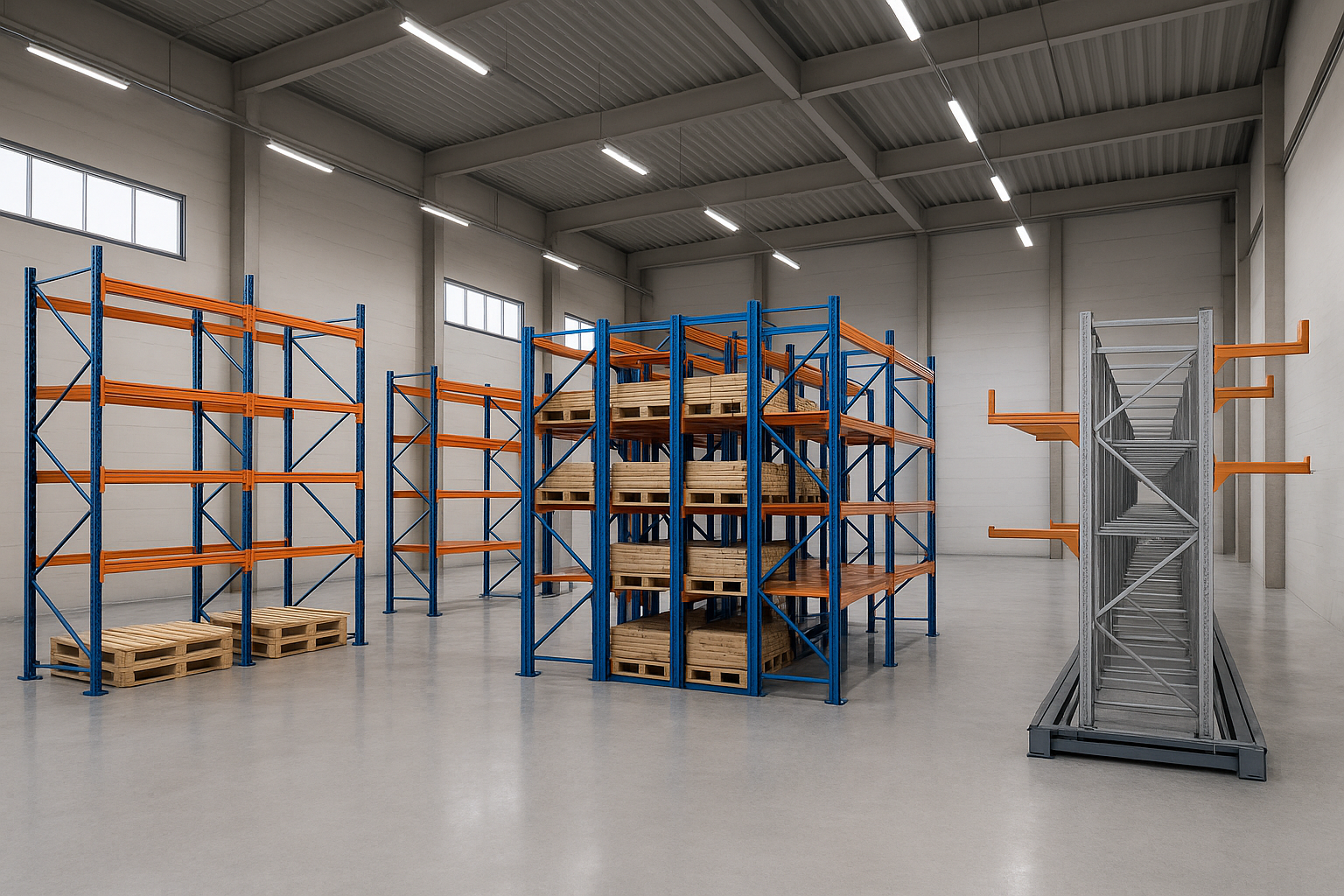
In the fast-paced world of warehouse operations, efficiency isn’t just a competitive advantage it’s a necessity. One of the most overlooked yet highly impactful strategies to improve picking speed and reduce operating costs is pallet slotting optimization.
From Amazon’s massive distribution centers to small-scale warehouses in the UAE, the science behind slotting products correctly can make the difference between meeting delivery deadlines or falling behind.
In this article, we’ll break down how pallet slotting works, the science that drives it, and practical methods to implement it effectively for faster picking, reduced travel time, and optimized storage layouts.
1. What is Pallet Slotting Optimization?
Pallet slotting optimization is the strategic process of assigning products to specific storage locations in a warehouse based on factors like product velocity, size, weight, and picking frequency.
The goal? Reduce picker travel time, enhance order accuracy, and maximize space utilization.
Example:
If a UAE-based cold storage facility stores both frozen vegetables (fast-moving) and specialty gourmet meats (slow-moving), placing high-demand frozen vegetables closer to the picking area significantly reduces handling time.
Key components of pallet slotting optimization:
- Velocity-Based Slotting – placing high-demand products near picking points.
- ABC Analysis – categorizing products into A, B, or C groups based on demand.
- Product Characteristics – factoring in size, weight, and fragility.
- Seasonal Adjustments – repositioning stock based on demand cycles.
2. The Science Behind Efficient Pallet Slotting
Slotting optimization is a data-driven discipline that uses inventory movement data to create logical, efficient storage layouts.
2.1 Velocity Analysis
Products are ranked according to their picking frequency.
- Fast Movers (A-items) – 20% of SKUs, 80% of movement
- Medium Movers (B-items) – 30% of SKUs, 15% of movement
- Slow Movers (C-items) – 50% of SKUs, 5% of movement
Why it matters:
Fast-moving SKUs placed near picking areas reduce travel time by up to 30%, lowering labor costs.
2.2 Cube Per Order Index (COI)
COI measures how much cubic space a product takes per order.
Formula: COI=Cubic Size of SKUNumber of PicksCOI = \frac{\text{Cubic Size of SKU}}{\text{Number of Picks}}COI=Number of PicksCubic Size of SKU
Lower COI products should be positioned closer to the picking area.
2.3 Product Affinity Slotting
Placing products often ordered together in close proximity.
Example: A racking slotting strategy in a UAE FMCG warehouse might place bottled water near energy drinks because they are often ordered together.
2.4 Ergonomics and Safety Considerations
Heavy items should be stored at waist level to reduce lifting injuries, while fragile goods should be placed in secure, low-traffic zones.
3. Benefits of Pallet Slotting Optimization
| Benefit | Impact |
|---|---|
| Faster Picking | Up to 30–50% reduction in travel time |
| Reduced Labor Costs | Fewer man-hours per order |
| Improved Order Accuracy | Less risk of mispicks |
| Space Utilization | More pallets stored without expansion |
| Better Safety | Reduced lifting injuries |
4. Steps to Implement Pallet Slotting Optimization
Step 1: Data Collection
- Gather SKU-level data (size, weight, pick frequency, seasonality).
Step 2: Classify Inventory (ABC Analysis)
- Assign storage priority based on velocity.
Step 3: Map Warehouse Zones
- Create zones for fast, medium, and slow movers.
Step 4: Apply COI and Affinity Logic
- Minimize wasted travel by placing frequently picked items together.
Step 5: Monitor and Adjust
- Seasonal adjustments for UAE’s retail spikes (e.g., Ramadan promotions).
5. Common Mistakes in Pallet Slotting
- Static Layouts – Not adjusting slotting for seasonal peaks.
- Ignoring Ergonomics – Poor placement causing worker fatigue.
- Data Blindness – No SKU-level demand tracking.
- Overlooking Pick Path Optimization – Random storage increases travel time.
6. Case Study: Pallet Slotting in UAE Warehousing
Scenario:
A UAE logistics firm reduced picking times by 38% by reorganizing pallet slots using ABC analysis.
- Before: High-demand SKUs scattered across multiple aisles.
- After: Clustered fast movers in one high-accessibility zone.
- Result: Faster fulfillment, reduced labor cost, and improved customer satisfaction.
7. Future of Pallet Slotting Optimization
- AI-Driven Slotting – Machine learning algorithms predicting SKU demand patterns.
- IoT Tracking – Sensors monitoring product movement.
- Robotics Integration – Automated guided vehicles (AGVs) fetching pallets.
FAQs on Pallet Slotting Optimization
Q1: How often should pallet slotting be reviewed?
Every 3–6 months, or before seasonal demand spikes.
Q2: What tools can help with pallet slotting optimization?
Warehouse Management Systems (WMS) with slotting modules, such as Manhattan Associates or SAP EWM.
Q3: Can pallet slotting work in cold storage environments?
Yes, but slotting must account for temperature zones, product shelf life, and worker comfort.
Q4: Is pallet slotting only for large warehouses?
No, even small facilities benefit from reduced travel time and better space use.
Q5: How does slotting impact order accuracy?
Strategic slotting reduces search time, minimizes mispicks, and improves fulfillment speed.